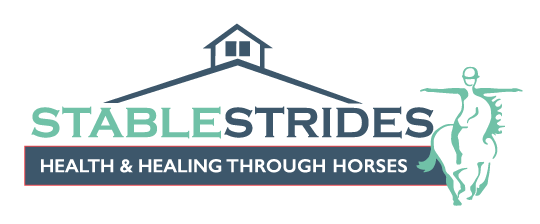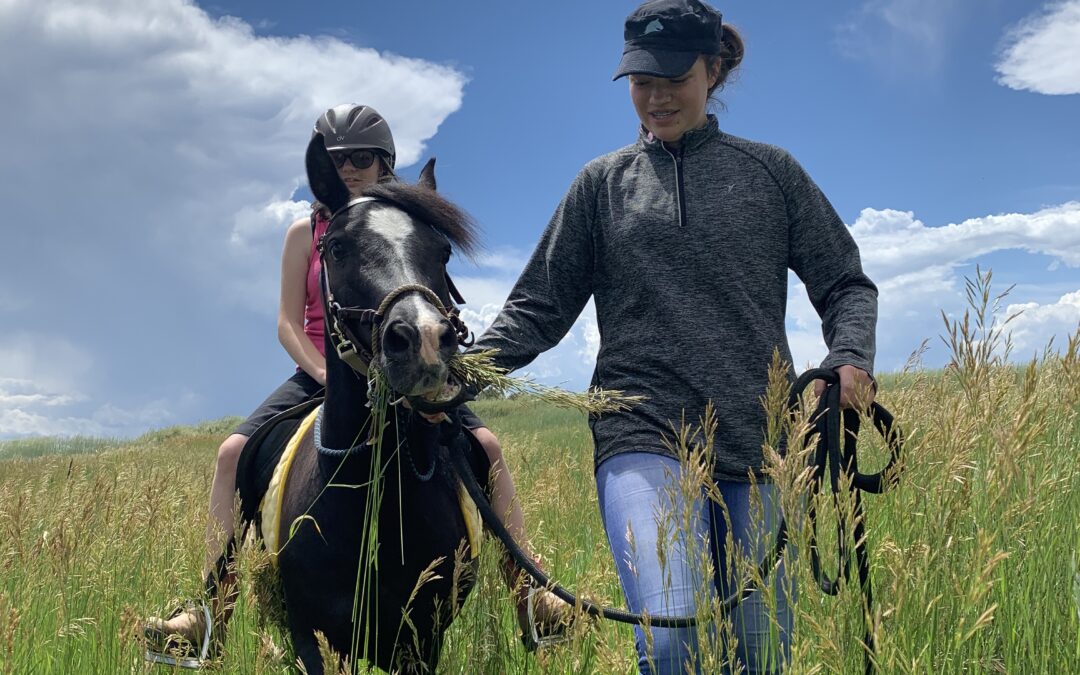Adaptive riding, also known as therapeutic riding, is an incredible program and service to individuals of all ages and abilities. However, a common misconception is that adaptive riding is therapy. This is partly due to the use of the term therapeutic riding and its similarity to therapy which is why many programs have begun using the term adaptive riding. Adaptive riding is a horseback riding lesson, modified or adapted to meet the clients’ needs and taught by a riding instructor specifically trained to work with individuals with disabilities, not a therapist. At a center credentialed by PATH Int’l (Professional Association of Therapeutic Horsemanship International) the instructor teaching the class is a Certified Therapeutic Riding Instructor and may possess additional qualifications or certifications.
Adaptive riding lessons can be offered to a group or an individual, and the focus is always on horsemanship and independence. Riders may have a horse leader to assist in guiding their horse through the lesson and up to two side walkers walking alongside them providing emotional and/or physical support. The role of the horse leader and side walkers is both to support the rider and assist them throughout the adaptive riding class, but also to encourage and promote independence. Many riders progress to have only one, or no side walkers and the horse leader only walking nearby. Some riders keep their volunteer support but gain independence in physical strength, steering, memory and leadership during the lesson.
Therapy with horses is quite different, partly because in therapy the focus is on the client’s individual and specific goals and not necessarily horsemanship. Additionally, any form of therapy must be facilitated by a licensed therapist, and not a horseback riding instructor, though some co-facilitation does occur. Equine Assisted Mental Health (EAMH) is a form of mental health therapy that incorporates horses and is facilitated by a mental health professional collaborating with an equine specialist or instructor. In EAMH the focus of the session is the client’s specific goals with their therapist, often aided by partnership with the horse through groundwork, grooming or leading.
Another form of therapy that uses horses is physical, occupational or speech therapy that incorporates equine movement into treatment. This therapy is facilitated by a licensed therapist or therapy assistant and co-facilitated by a therapeutic riding instructor, as the treatment time with the horse is mounted. See hippotherapy for more information on this form of therapy!


Recent Comments